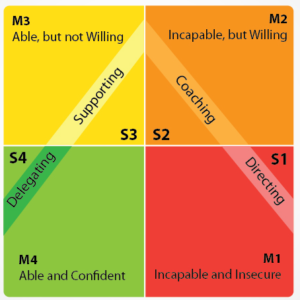I always loved to play with electronics stuff. When I was young I really liked to look inside my VCR and cassette recorder, as well as having a passion for screwdrivers. By the age of 10 I was dismounting all the electronics stuff I had, and reusing the components for the good and the bad. When I was 12 I had my self-made milk stirrer, made out by a cassette player DC motor: it was awesome and my Chocolate Nesquik was perfectly dissolved, obtaining a perfect solution, at least until I dropped it in the milk. However, I also got to burn a Batman action figure by short circuiting a big big battery. In the end I grew old, and got my PhD in Electrical Engineering.
More recently I moved to Silicon Valley thanks to a Fulbright scholarship (take a look at this article) and pivoted my CV to Entrepreneurship and Innovation. The scholarship, however, was barely sufficient to cover all the expenses of the crazy Silicon Valley. Moreover, the research institute I was working for could not support me during this period. I was then looking for some part-time opportunities that could be carried out remotely and with a reasonable workload. Serendipity hit right in the face and I luckily got in contact with a London-based start-up that was looking for somebody to take care of their hardware. It turned out that I was the right person for that job.
Long story short
After three painful months I decided to quit! At the same time, the company wasn’t sure to go on. Hence, in agreement we decided to end our collaboration. I spent a couple of night awake, questioning why this happened: was it mine or their fault? Being pretty busy with the Business & Management classes, I forgot what happened and went on with my life. Till yesterday!
Laying down on the sofa of the townhouse Santa Clara University assigned me, I randomly opened a recently bought book. As I started skimming the pages describing the Heresey-Blanchard model, everything was clear.

IN THE GRAPH: The Heresey-Blanchard model. Read right to left.
The model is part of the organizational theory, started with the Fordism and Taylorism in which the man is seen as a machine and should be treated as such, and states that every leader — from a project manager to a big-corp C-level leader — has to adapt his style of leadership depending on the situation at hand. This is called situational leadership theory.
Lead your employees in such a way that you yourself become superfluous. And lead your employees to be successful, so that one day they will be in a leadership position themselves. {M. Krogerus and R. Tschäppeler}
I’ll try to explain this model, since this will be the base for my final consideration on what happened in my situation. The model defines four leadership styles for the leader (S) and four maturity levels of those who are led (M) that are mutually linked:
S1 – Instructing/Directing: Thought for collaborators that are starting a job. Despite their low experience and insecurity, their level of committment is usually high at this stage. Generally, at this level, employees are given orders and instructions. This is the first stage you should consider when you hire a novel young professional.
S2 — Coaching: Employees’ level of expertise has increased, if you did a good job with the S1-M1 phase. However, the employee still needs to be coached. The willing to go on is high, even though the euphoria of the beginning has fallen. At this stage, generally the employees receive questions that are answered by their own solitaire work. The level of attention to this phase of the employee has to be high and the support from the leader has to be proportional.
S3 — Supporting: This stage is critical. The morale of the employee may vary significantly. Many employee tend to leave their job due to leadership pressions. Others instead are encouraged to give their best as a result of being given more indipendence.
S4 — Delegating: Here your “creature” is fully delveloped and is able to control his work-flow. He understands that he gained both competence and confidence and his motivation is very high. This is the stage in which you want to give them their own projects and make them lead their own teams.
Consider this as a pathway to bring a newbie to a pro, to bring him to be as similar to you as possible. In this way you will be able to trust who you trained, reduce your workload, increase productivity and widen your company’s abilities. Depending on the leader and the collaborator, this path might last from 6 months to 5 years. However, the lenght of the path is not representative of the quality of both the leader and the employee, and depends a lot on the person you hired. If you took an M3 (remember, no one ever starts a new job as an M4), it will be probably easier to bring him to M4. Anyway, starting from intermediate levels might not be the best choice if you aim to “create” a fully independent co-worker.
What went wrong
Coming back to my experience, in this sofa epiphany I understood exactly what happened and I was very releived to understand that it was not my fault. I won’t get into the technical details of what specifically happened but I’ll try to analyze what went wrong in the organization of my path to join the company and his venture.
Indeed, the company management just gave me a lot of task without taking me hand-by-hand in the company’s working routines. I was substituting a very skilled product manager that had a too high workload and for whom hardware was not his main area of competence. I started managing one of his project. The result? Internal miscommunication was everyday routine. They made me jump on a daily basis from M1 to M3 to M4 to M2. The company CEO was expecting only to delegate, without taking action to bring me into a proper introductory path. Moreover, I was hired as an external consultant for a managing position, which in my mind didn’t make any sense. The worse escalated quickly.
I worked a lot on myself during these months that, in the end, were productive from a personal point of view. I passed by myself from M1 to M2. When I was just arrived to M3 I was exhausted, my morale went down, and I decided to quit. All this might have been prevented from the leadership of the company just by applying a simple but powerful model.
For sure, I learnt how not to treat my future collaborators.
